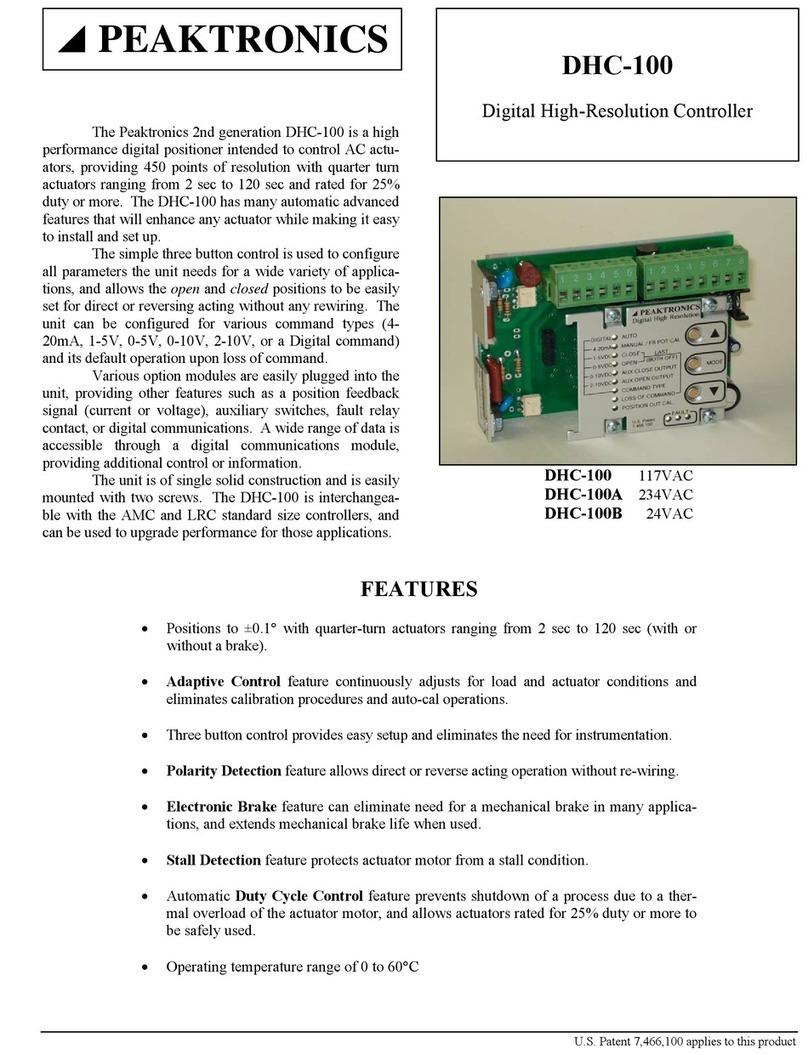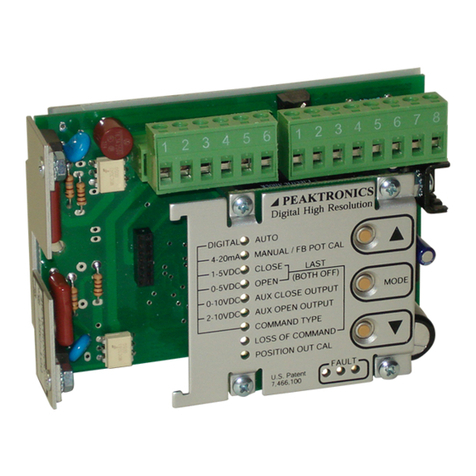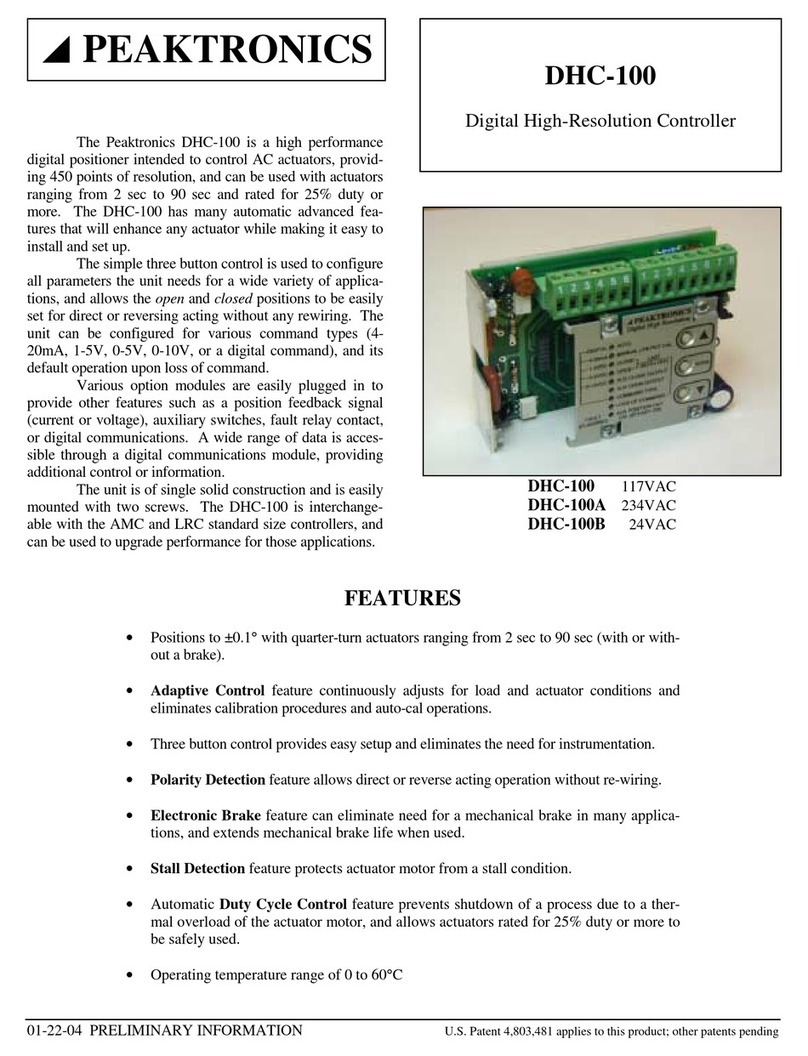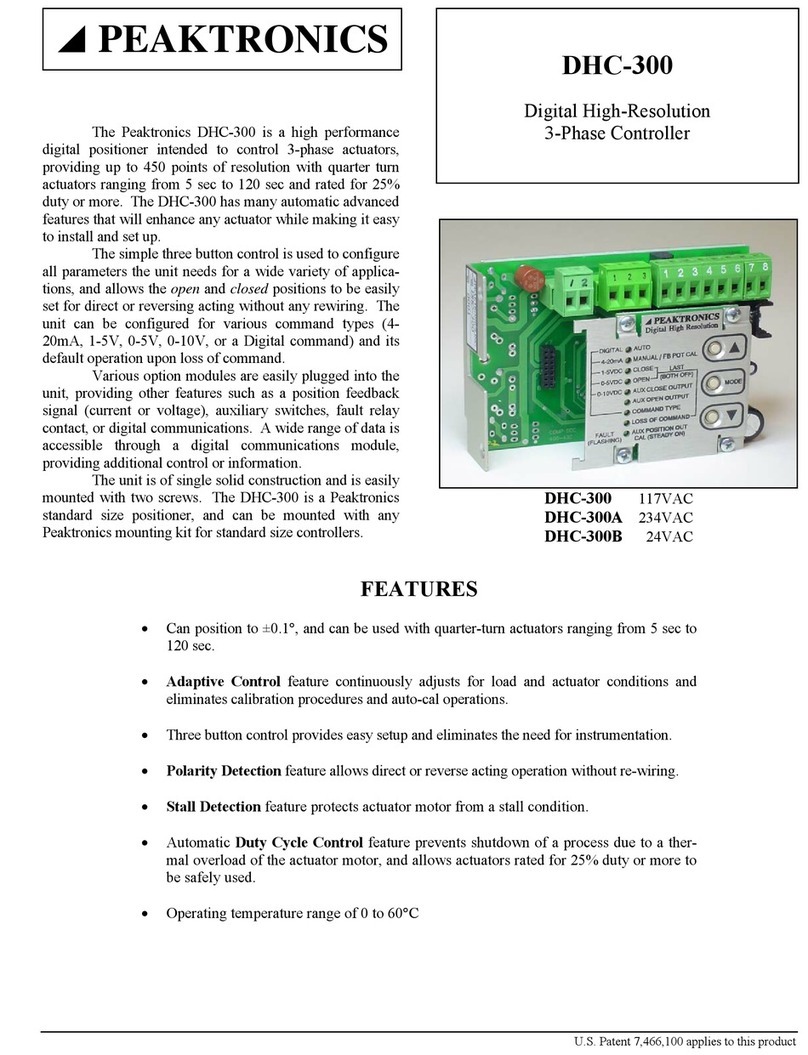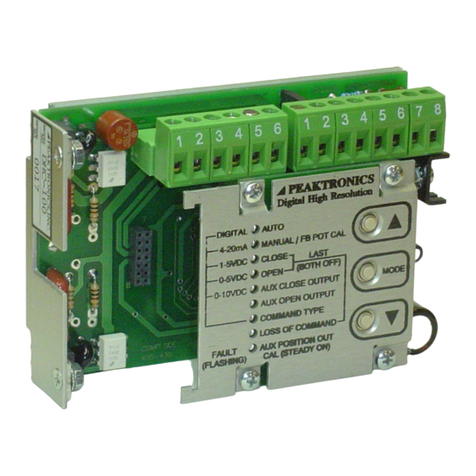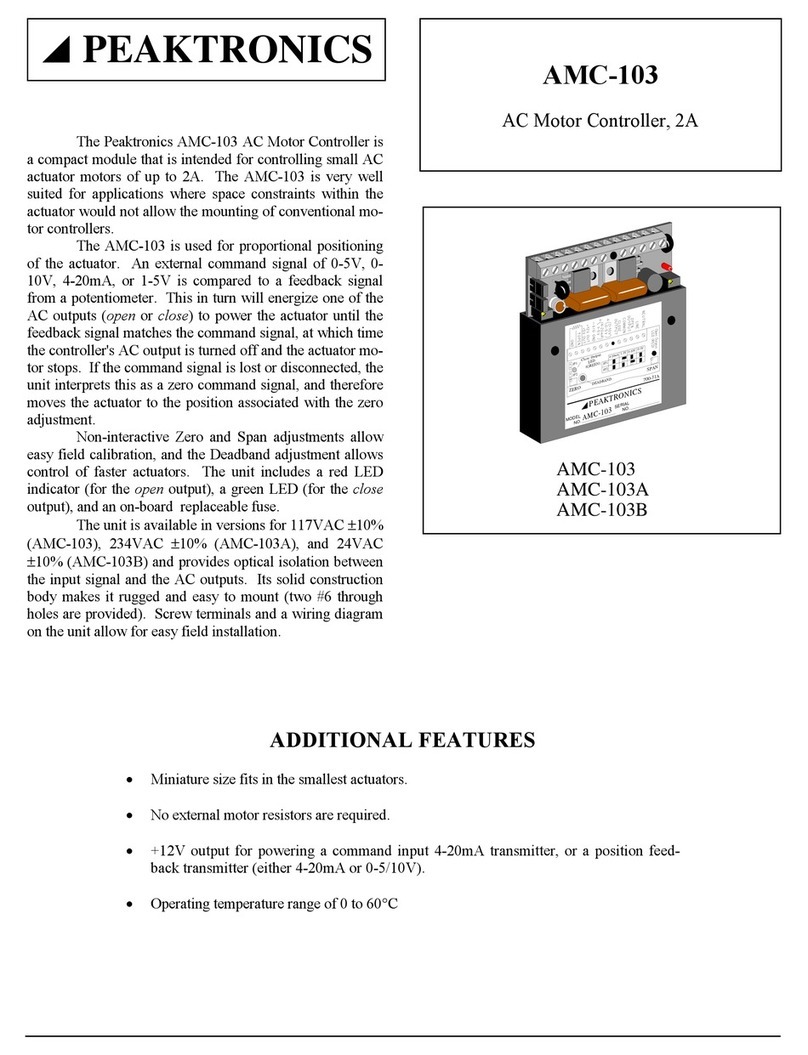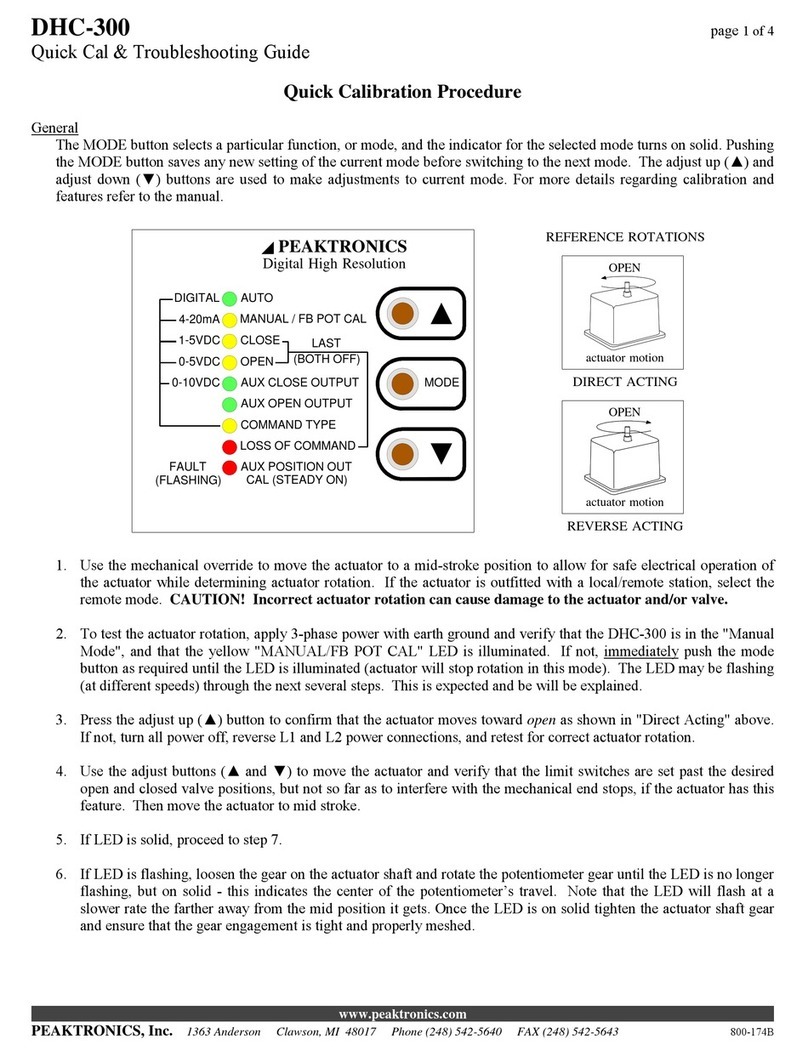
DHC-301
page
3 of 4
Quick Cal & Troubleshooting Guide
www.peaktronics.com
PEAKTRONICS, Inc.
1363 Anderson Clawson, MI 48017 Phone (248) 542-5640 FAX (248) 542-5643
800-210A
FAULT INDICATORS
The DHC-301 detects various fault conditions that
prohibit the unit from controlling the actuator. A combination
of the three Fault indicators (red, yellow, and green) will turn
on or flash to indicate a specific detected fault. Note that a
fault condition DOES NOT disable the motor outputs when
manually controlling the actuator with the adjust buttons;
while useful for troubleshooting, care should be exercised
when operating the motor under a fault condition. The
OVERRIDE mode can also operate the motor when a fault
condition exists (see OVERRIDE MODE in manual).
Note that the indicators may not indicate all the fault
conditions that may exist. This means that when the indicated
fault is corrected, the unit may display another fault that has not
been corrected.
The table below provides a summary of the Fault indications.
RED YEL GRN FAULT
ON flash OFF Motor 1 No Motion (Stall)
ON OFF flash Motor 2 No Motion (Stall)
ON flash flash Double No Motion (Stall)
OFF OFF flash Feedback Alarm
OFF flash OFF Loss of Command
OFF ON OFF Command Out of Range
OFF flash flash Feedback Alarm and
Loss of Command
OFF ON flash Feedback Alarm and
Command Out of Range
Motor 1 No Motion (Stall) - A fault condition is detected when no actuator motion is detected while the Motor 1 output is turned on.
The fault condition will disable the Motor 1 output only, and the fault is cleared when the DHC-301 detects a motion greater than 1.5°in
either direction. The fault can be cleared if 1) the command signal commands a Motor 2 operation, 2) manual operation with the adjust
buttons results in a motion greater than 1.5°, or 3) a mechanical manual override forces the 1.5°motion, provided the mechanical mo-
tion is monitored by the feedback pot.
Motor 2 No Motion (Stall) - A fault is detected when no actuator motion is detected while the Motor 2 output is turned on. The fault
can be cleared in the same manner as a Motor 1 Stall (see above).
Double No Motion (Stall) - If the DHC-301 detects no actuator motion in either direction, both motor outputs will be disabled. The
command signal cannot clear this condition; only manual operation or a mechanical override can clear the fault. Alternatively, the
DHC-301 can be powered off and then on to temporarily clear the fault; however, this practice should be avoided without permanently
correcting the cause of such a fault.
Feedback Alarm - A fault condition is detected whenever the feedback signal is out of range (that is, less than 5% of the potentiometer
value or more than 95% of the potentiometer value), or when any of the potentiometer connections are broken. Normal operation re-
sumes when the potentiometer is reconnected or back in range.
Loss of Command - If the command signal is disconnected, the fault indication will remain on until the signal is reconnected. See
LOSS OF COMMAND in manual for details.
Command Out of Range - If the command signal goes out of range, the fault indication will remain on until the signal is back in range.
See LOSS OF COMMAND in manual for details.
PROBLEM POSSIBLE CAUSES REMEDIES
No response from unit
(All lights are off.)
No power
Excessive voltage applied to unit.
Blown or missing fuse
Check power source.
Replace unit.
Replace with appropriate fuse; see
"Specifications" in manual.
No response from unit, and no re-
sponse from the adjust (▲and ▼) or
Mode buttons.
(MANUAL / FB POT CAL light is lit sol-
id.)
Jumper wire on J7 terminal block is
missing.
Auto/Manual station is improperly
wired.
Install jumper wire on J7 terminal block.
Check wiring on Auto/Manual station;
see "Override Mode" in manual.
